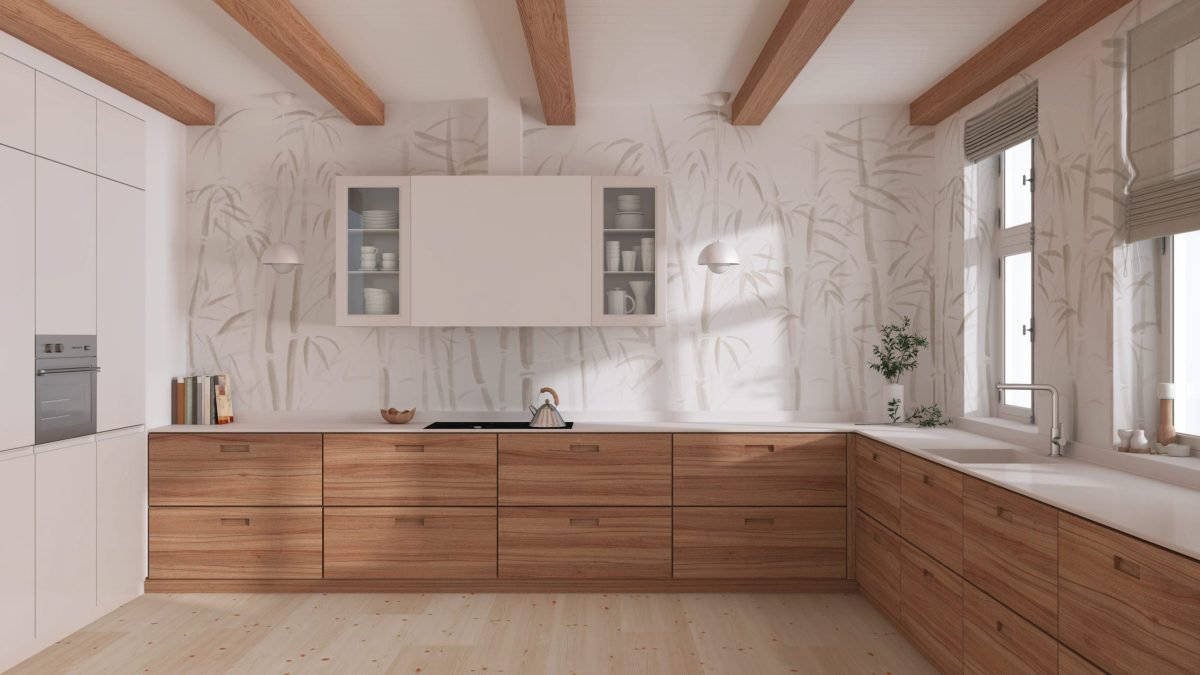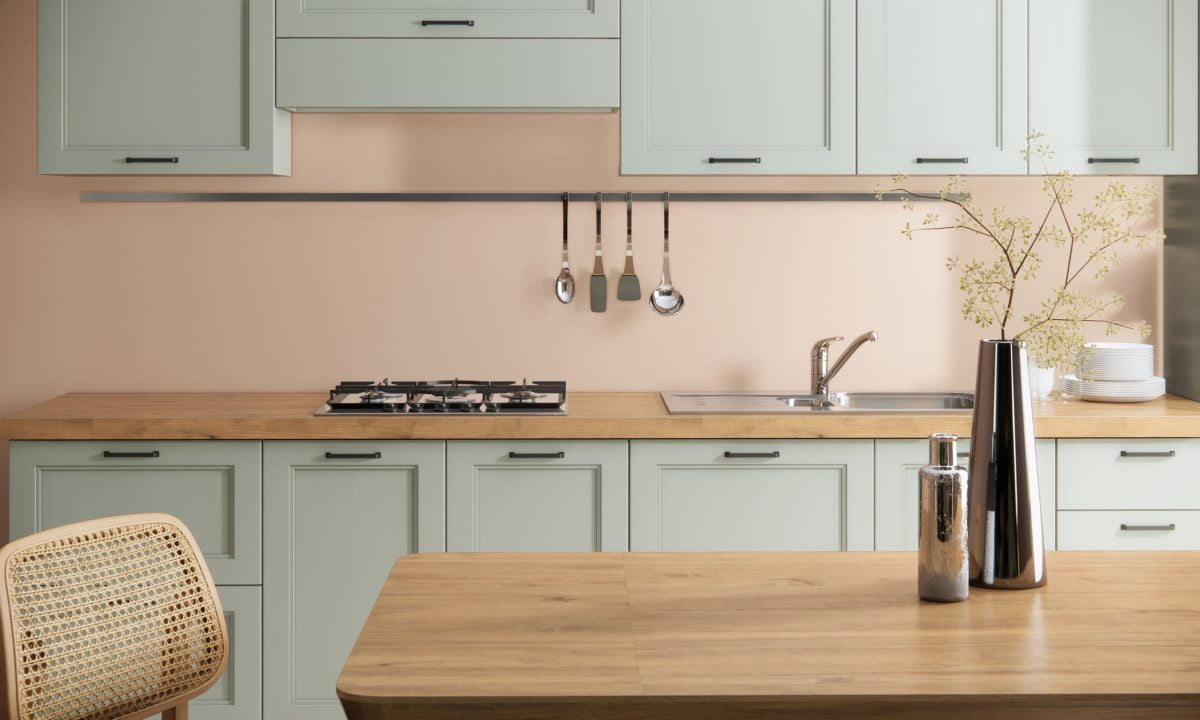Japandi kitchen design is a relatively new trend that has been gaining popularity in recent years. Find inspiration with these simple Japandi kitchen design ideas.
What Is Japandi Style?
As the name suggests, it is a fusion of Japanese and Scandinavian design principles. Both styles share a minimalist, functional approach to design, making them a perfect match for those who appreciate clean lines and simple, yet elegant aesthetics.
One of the key features of Japandi style home design is the use of natural materials such as wood, stone, and paper. We typically see these materials left in their natural state, showcasing their unique texture and grain.
In Japanese design, this is known as wabi-sabi, which emphasizes the beauty of imperfection and the organic nature of natural materials. In Scandinavian design aspects, the use of natural, textured materials is known as hygge. Hygge emphasizes coziness and warmth.

Japandi Kitchen Design
An important element of Japandi interior design is the use of muted color palettes. Both Japanese and Scandinavian design favor neutral colors such as white, beige, and gray, with occasional pops of color in the form of accent pieces.
However, earth tones provide pops of color. For example, clay red, sage green represent a pop of color. This creates a calming and serene atmosphere that is both soothing and welcoming.
Japandi design also places a strong emphasis on functionality and practicality. This means every piece of furniture and decor serves a purpose, and there is no wasted space. In Japanese design, this is known as “ma”, which refers to the concept of negative space. In Scandinavian design, this is known as “lagom”, which emphasizes balance and moderation.
Japandi design also incorporates elements of nature, such as plants and natural light. Both Japanese and Scandinavian design favor large windows that let in plenty of natural light. Plants also add a touch of greenery and nature to the space. This creates a connection between the indoors and outdoors, which is an important aspect of both design styles.
You can incorporate basic elements of Japandi design like natural materials, muted color palettes, and a focus on functionality into kitchen design. All of these elements come together to create a kitchen that is not only inviting but efficient.

Japandi Style Countertops
Countertops play a key role in both Japanese and Scandinavian design. They add texture, color, and visual interest to the space.
When it comes to countertop materials that fit into a Japandi design scheme, we think natural stone and wood are obvious choices. These two options check all the Japandi design boxes such as nature, texture and warmth while also allowing and honoring imperfections.
Natural stones include granite, quartzite and marble. We suggest muted stones and if possible honed. This will create colors found directly in nature and provide a tranquil and textural feel.
Butcher block countertops are another option to create a Japandi kitchen. Walnut and birch woods, both create warmth and originality in your space.
Come visit our showroom to see the newest natural stones. Our designers are experts at helping you bring a sense of nature and calm into your home.